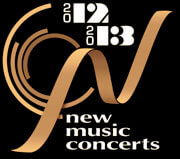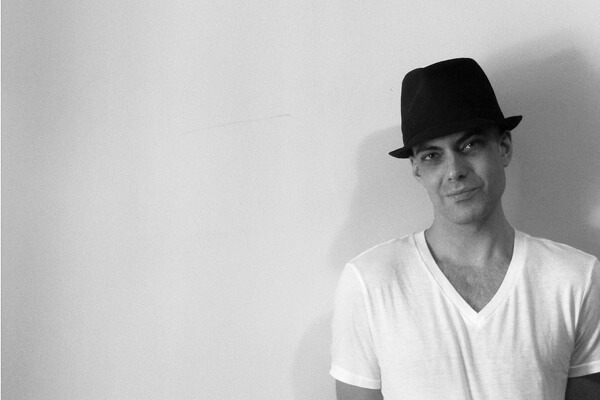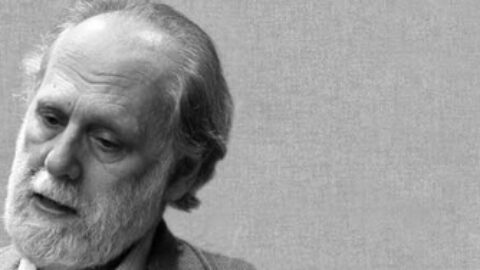 If you ask a group of classical music fans to make a list of American masterworks, they might write down any number of things: Copland’s Appalachian Spring, Gershwin’s Rhapsody in Blue, Glass’s Einstein on the Beach, Reich’s Music for 18 Musicians, Ives’s Concord Sonata, or, if the planets are aligned, Elliott Carter’s String Quartet No. 2. If you ask that same group for a list of Canadian masterworks, they will likely, and unfortunately, respond with a shrug and a blank piece of paper. This very sentiment was shared by three Canadian composers in a question and answer session before a February 3, 2013, performance in Toronto called “Then and Now.” Part of the 42nd season of the New Music Concerts series, the performance was a celebration of music by Canadian composers from different generations. Each of the three composers present at the concert — Brian Cherney (b. 1942), Adam Scime (b. 1982), and Brian Harman (b. 1981) — responded to both specific questions about the works to be performed that evening, and general questions about the history and future of Canadian concert music. Cherney addressed the issue of canonization in Canadian music most directly, claiming that while there are opportunities for premieres of new works, those works often fall out of concert schedules shortly thereafter, rarely (if ever) to be revisited.
If you ask a group of classical music fans to make a list of American masterworks, they might write down any number of things: Copland’s Appalachian Spring, Gershwin’s Rhapsody in Blue, Glass’s Einstein on the Beach, Reich’s Music for 18 Musicians, Ives’s Concord Sonata, or, if the planets are aligned, Elliott Carter’s String Quartet No. 2. If you ask that same group for a list of Canadian masterworks, they will likely, and unfortunately, respond with a shrug and a blank piece of paper. This very sentiment was shared by three Canadian composers in a question and answer session before a February 3, 2013, performance in Toronto called “Then and Now.” Part of the 42nd season of the New Music Concerts series, the performance was a celebration of music by Canadian composers from different generations. Each of the three composers present at the concert — Brian Cherney (b. 1942), Adam Scime (b. 1982), and Brian Harman (b. 1981) — responded to both specific questions about the works to be performed that evening, and general questions about the history and future of Canadian concert music. Cherney addressed the issue of canonization in Canadian music most directly, claiming that while there are opportunities for premieres of new works, those works often fall out of concert schedules shortly thereafter, rarely (if ever) to be revisited.

Of the five works presented at “Then and Now,” two were world premieres commissioned by New Music Concerts — In the Earth and Air by Scime and En Masse by Harman. Interplay by John Weinzweig (1913-2006) was commissioned by New Music Concerts for a program in 1998. The remaining two pieces, Trio for flute, viola and harp by R. Murray Schafer and Die klingende Zeit by Cherney, were finished and premiered in 2011 and 1994 respectively. While it might not be appropriate to call any of these pieces masterworks just yet, the program was a fitting combination of premieres and revisited works to further Cherney’s pre-performance argument.
Trio for flute, viola, and harp opened the concert, and had the mystically undefinable organicism that draws so many listeners to Schafer’s compositions. The flute and viola blended beautifully throughout, trading both lyricism and virtuosic passages in the first and second movements. In a drastic change of style, the third movement was folk-inspired dance, with the harp providing a rhythmic, guitar-like groove to accompany the flute and viola’s active melody.
Robert Aitken, the Artistic Director of New Music Concerts remarked before the performance that it would be difficult to understand John Weinzweig’s music without imagining him sitting at a piano improvising some of the riffs in his scores. It might be equally difficult to hear Interplay for piccolo, tuba, and piano without imagining a composer laughing to himself after writing certain passages. His comedic choreography had the performers both stand and “blast” musical fragments at one another and leave the stage entirely. The improvised riffs that Aitken mentioned were ubiquitous in the work, and each was simple, brief, and developed with stunning clarity.

Scime’s In the Earth and Air for soprano and ensemble was a work mature beyond his years. Scime’s ability to present an interesting reaction to the chosen texts was astounding, and the musical result was remarkable. Texture is a particularly vital part of Scime’s musical language, and he works with it well. Harman’s En Masse never quite seemed to make a clear impression of what it was. Inspired by ritual music, the work had a visceral humanistic quality to it, but seemed to float quietly and laboriously through faintly related ideas, making it somewhat difficult to understand.
Cherney’s Die klingende Zeit was the gem of the evening. Once a student of none other than John Weinzweig, one can easily tell that clarity was a central part not only of Weinzweig’s writing, but also of his teaching. Cherney creates inviting sustained textures that morph over time to form a landscape behind everything happening on stage. Even more impressive is the fluidity with which melodies and ideas escape from that textural landscape and disappear back into it.
The dilemma presented by Cherney before the concert is an interesting one. By what process is a new piece of music recognized as a masterwork? After all, it does not seem overly optimistic to think that the canon could hold a few more works. What’s more, it does seem overly pessimistic to believe that no new works are worthy of such esteem. I do not claim to have the answers to the complicated questions that arise regarding the musical landscape and programming, but they are no doubt worth considering as we continue to compose, perform, listen to, and react to the music of our time. “Then and Now” was an excellent presentation of the Canadian composers that have shaped, and continue to shape, contemporary music in Canada. If you have the opportunity to hear a performance in the New Music Concerts series, I urge you to attend — you might hear something masterful.
–
Justin Rito is a composer, pianist, runner, Detroit Tigers fan, and microbrew lover currently living in London, Ontario. Follow him on Twitter @justinrito.
























